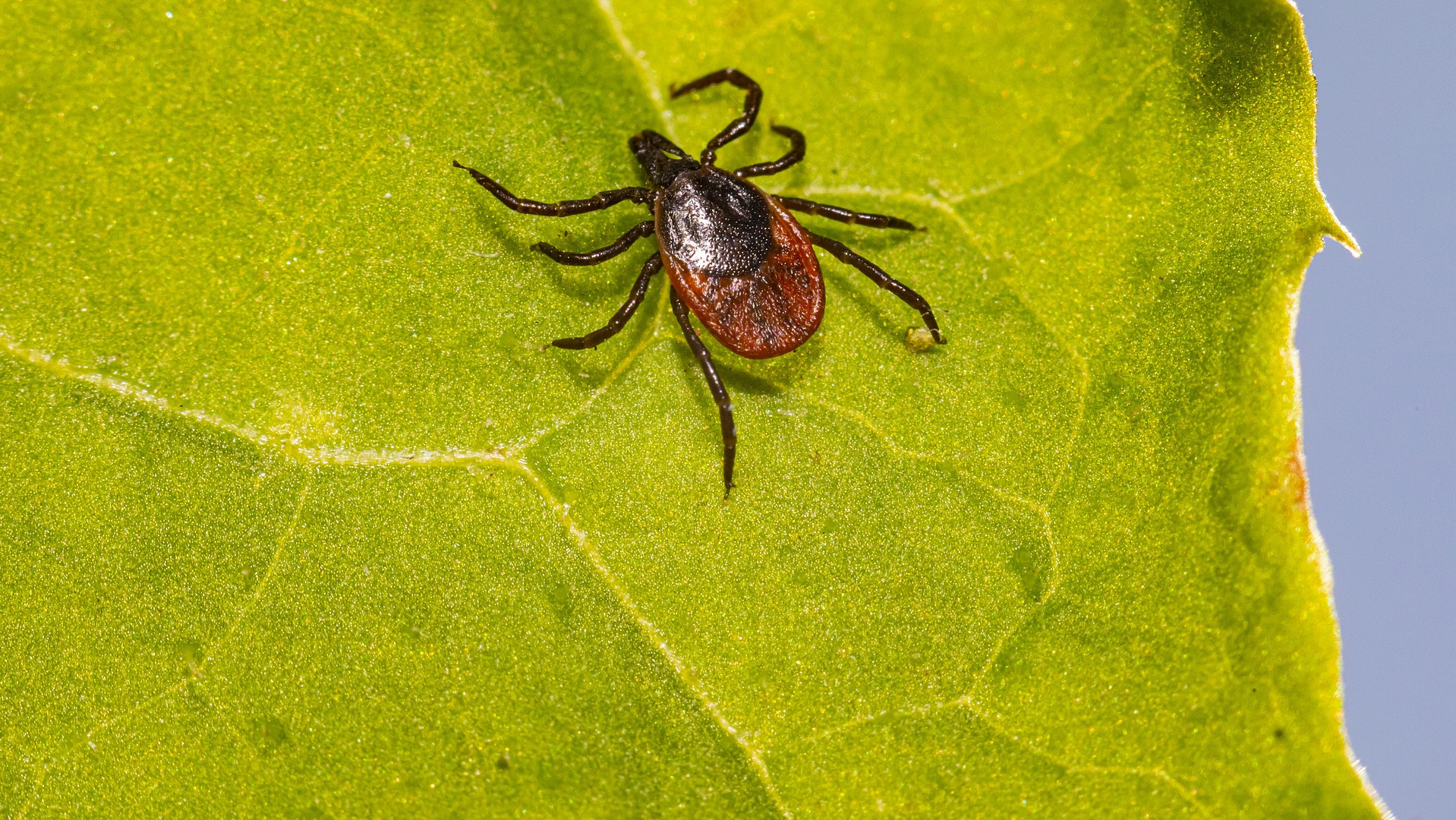Tick Bites: Home Remedies, OTC Treatments & Prevention
A tick bite can happen when camping, hiking, or even in your backyard. Since tick bites are usually painless, many people don’t realize they’ve been bitten until redness, itching, or swelling appears.
While most tick bites cause mild irritation, certain ticks can transmit Lyme disease, Rocky Mountain spotted fever, and other infections. That’s why it’s important to know how to remove a tick properly and treat the bite effectively.
Common Causes of Tick Bites
Ticks thrive in wooded areas, tall grasses, and humid environments. They attach to hosts, such as humans or animals, by latching onto the skin and feeding on blood. Some common causes of tick bites include:
- Spending time outdoors in wooded areas or tall grass
- Walking through leaf piles or uncut grass in backyards or parks
- Camping or hiking without proper clothing protection
- Having pets that carry ticks indoors
How to Safely Remove a Tick
If you find a tick attached to your skin, removing it correctly and quickly can reduce the risk of infection. Follow these steps:
- Use fine-tipped tweezers to grab the tick as close to the skin as possible.
- Pull the tick straight out with steady pressure. Do not twist or jerk, as this may leave mouthparts in the skin.
- Dispose of the tick by placing it in a sealed bag or flushing it down the toilet.
- Wash the bite area with soap and water, then apply an antiseptic.
When to Avoid Certain Remedies
Some old-fashioned tick removal methods do more harm than good. Do not use petroleum jelly, nail polish, or heat to remove a tick—these methods do not work and may increase disease transmission risk.
Avoid scratching the bite, as this can cause irritation and increase the risk of infection. If you’re using essential oils, always dilute them before applying them to the skin to prevent irritation.
Medical Treatment for Tick Bites
Most tick bites heal on their own, but some require medical attention. A doctor may prescribe antibiotics (such as doxycycline) if there is a risk of infection or Lyme disease.
Severe allergic reactions or symptoms of tick-borne illness, treatment may include:
- Antibiotic treatment for bacterial infections
- Steroids to reduce swelling in severe cases
- Pain relievers for headache or muscle aches
When to See a Doctor
Seek medical attention if you experience:
- A rash that spreads outward (a bullseye rash could indicate Lyme disease).
- Fever, chills, or body aches within a few days or weeks of a tick bite.
- Swollen lymph nodes or flu-like symptoms.
- Difficulty breathing, dizziness, or severe allergic reaction.
Preventing Tick Bites
To reduce your risk of tick bites, follow these prevention tips:
- Wear long sleeves, long pants, and closed-toe shoes in tick-prone areas.
- Use insect repellent containing DEET or permethrin.
- Perform a full-body tick check after spending time outdoors.
- Shower and wash clothes immediately after outdoor activities.
- Keep grass trimmed short and remove leaf litter from yards.
Home Remedies for Tick Bites
Most tick bites are harmless, but some can lead to serious infections or Lyme disease. Knowing how to remove a tick properly, treat a bite with home remedies or OTC solutions, and recognize signs of illness can make a significant difference in recovery.
If you develop flu-like symptoms, a rash, or unusual swelling after a tick bite, seek medical care promptly.
Tea Tree Oil
Tea tree oil has antibacterial and anti-inflammatory properties that can help prevent infection. Apply a diluted mixture of tea tree oil and coconut oil to the bite area to soothe irritation.
Aloe Vera
Aloe vera gel provides cooling relief and helps reduce inflammation. Apply fresh aloe vera gel to the bite to soothe irritation and speed up healing.
Baking Soda Paste
Baking soda helps neutralize skin irritation. Mix one teaspoon of baking soda with a few drops of water to create a paste, then apply it to the bite for 10 minutes before rinsing off.
Cold Compress
A cold compress or ice pack can reduce swelling, itching, and discomfort. Apply a cold compress wrapped in a towel to the bite for 10-15 minutes.
Oatmeal Bath
If you have multiple bites or widespread itching, an oatmeal bath can provide relief. Add 1 cup of colloidal oatmeal to a lukewarm bath and soak for 15-20 minutes.
Honey
Honey is a natural antibacterial agent that can help prevent infection. Apply a small amount to the tick bite and cover it with a bandage.
Witch Hazel
Witch hazel has natural astringent properties that can help reduce itching and irritation. Dab a cotton ball soaked in witch hazel onto the bite.
Over-the-Counter (OTC) Treatments for Tick Bites
Some OTC treatments can help manage symptoms from tick bites:
- Antihistamines (Benadryl, Claritin, Zyrtec) – Reduce itching and allergic reactions.
- Hydrocortisone Cream – Helps relieve swelling, redness, and itching.
- Antibiotic Ointment (Neosporin, Polysporin) – Prevents infection if the skin is broken.
- Calamine Lotion – Soothes irritation and reduces itching.
Lifestyle Tips for Faster Healing
Most tick bites are harmless and heal quickly, but some can lead to infections or tick-borne diseases. Knowing how to safely remove a tick, treat a bite, and recognize warning signs can help prevent complications.
If you notice a spreading rash, flu-like symptoms, or persistent swelling, see a doctor to rule out serious infections. Prevention is key, so wear protective clothing, use insect repellent, and check for ticks after spending time outdoors.
- Keep the bite clean and avoid scratching.
- Stay hydrated to support immune function.
- Eat anti-inflammatory foods like leafy greens, berries, and nuts to help reduce swelling.
- Get plenty of rest, especially if you're experiencing mild flu-like symptoms.



